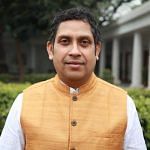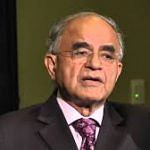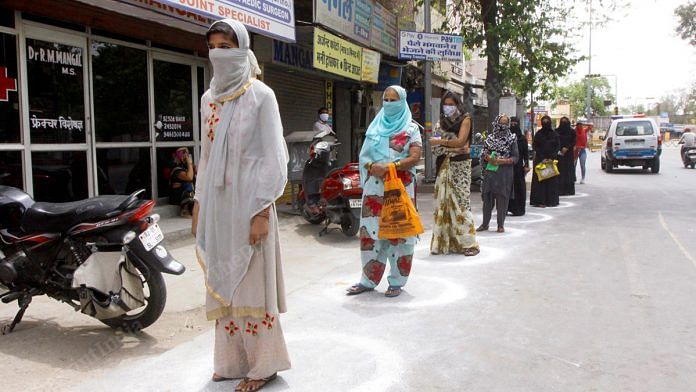
 A blueprint to revive the economy
A blueprint to revive the economy
P. Chidambaram | Former Finance Minister of India & sitting Member of Parliament
Praveen Chakravarty | Political economist & senior office-bearer of the Congress party The Hindu
Chidambaram and Chakravarty suggest ways that with ‘smart’ lockdown and ‘careful’ economic management, there doesn’t have to be a choice between lives and livelihoods. Firstly, the scale of the economic crisis must be diagnosed accurately to give a “demand side and supply side” response. The poor must be provided both money and food, and the government must universalise food distribution immediately. District collectors should be allowed to expand work under MGNREGA. Economic activity should be revived in non-hot spot areas, along with continuous testing to in case new areas turn into hotspots. The authors estimate that the total fiscal package will cost ₹5-6 lakh crore which they feel is available, but the government can monetise part of additional deficit by printing money.
 The States need to step up, urgently
The States need to step up, urgently
Yamini Aiyar | President and chief executive, Centre for Policy Research
Hindustan Times
Aiyar also has prescriptions for the logistical and economic challenges brought up by the nationwide lockdown, saying they will become more acute in the next phase. Three things need to be done urgently — first, the public distribution system (PDS) needs to be universalised and cash transfers need to be expanded for the next three months. Second, there needs to be better Centre-state coordination to resolve issues in everything from movement of essential goods to procurement of Personal Protective Equipment (PPE) and testing kits, and also in rolling out a fiscal relief package. Thirdly, the government must be more “transparent and credible” about its data, what its testing strategies are and provide rationale for locking down areas.
 India Faces Sophie’s Choice
India Faces Sophie’s Choice
Gurcharan Das | Author
The Times of India
Das argues that the coronavirus lockdown has created the dilemma of having to pick between lives and livelihood. Epidemiologists had predicted that nearly 400 million Indians could be infected by the end of July, with 10 million patients hospitalised. But since India has only 1,00,000 intensive-care beds and 20,000 ventilators, the government had little choice but to impose a lockdown. However, even if India manages to slow down the spread of the virus, extended or multiple lockdowns will cause “mass unemployment and a brutal recession”, with half a billion daily wage earners most affected. The cost of welfare packages now needed will destroy the government’s finances, writes Das. “Is the cure worse than the disease?,” he asks.
 Ahead of the Covid curve
Ahead of the Covid curve
T M Thomas Isaac | Finance Minister, Government of Kerala
The Indian Express
Isaac seeks to explain Kerala’s relative success in handling the Covid-19 crisis. He notes thatKerala’s Covid-19 curve is flattening, as the transmission rate of a primary carrier in Kerala is only 0.4 and recovery rate is at 50 per cent. However, it needs to prepare for other challenges, like the influx of migrants from foreign countries that will return once the lockdown is lifted. Accommodation and facilities for over two lakh persons are in place for this. The experiences of successful containment of the Nipah outbreak and management of the two post-flood health situations have provided a kind of “herd immunity” to the health workers to crisis situations. The synergy between state government plans and programmes with the local governments, the co-operatives, women neighbourhood groups (Kudumbashree) and civil society organisations makes Kerala’s health systems distinct.
 An informed strategy for lockdown exit
An informed strategy for lockdown exit
Abheek Barua | Chief Economist & Executive vice-president, HDFC Bank
Business Standard
Barua writes that the key constraint during a lockdown is the freeze in labour supply, which is demanded by social distancing. It then becomes pertinent to “find a point” in the infection cycle when a stable labour force resumes productive activity. Barua argues that there are two problems with India’s testing strategies as of now. First, the number of tests conducted so far are “pitifully inadequate of our size”. Second, the restrictions on activities in ‘red zones’ will affect supply chains because India is not just an integrated market, but an integrated production complex as well.
 Covid-19 has given Modi an opportunity to wield the power of his popularity
Covid-19 has given Modi an opportunity to wield the power of his popularity
Aakar Patel | Columnist
Business Standard
Patel maintains that India faces some advantages in contrast to the challenges faced by the world in 2020. He argues that we have a government with a full majority and that our Prime Minister is popular. Solutions to tackle Covid-19 can be treated easily through legislation and policy. The second advantage is that our economy is informal. Patel asserts that it will “adjust” to the new reality. He hopes that the choices made by the leadership are “wise” and come with the “execution of competence”.
 India must change its testing strategy
India must change its testing strategy
Chandra Bhushan | CEO, iForest
Financial Express
Bhushan maintains that getting a test for coronavirus remains an “arduous” task in India. Moreover, data from the Indian Council of Medical Research (ICMR) makes it clear that the number of tests conducted in India are only focusing on the symptomatic cases. He suggests that we have been “conservative” of our testing strategy. ICMR’s strategies are a month behind the global standards. Moreover, Bhushan asserts that India must start large-scale community testing.






